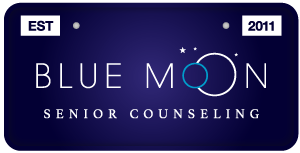
Economic uncertainty isn’t just something you hear about on the news—it’s something many older adults are feeling in their day-to-day lives. Whether it’s the rising price of groceries, changes in Medicare coverage, or the stress of stretching a fixed income, the financial landscape in 2025 is creating new challenges for seniors across the country.
Table of Contents
- The Rising Cost of Everyday Living
- What’s Changing With Social Security and Medicare
- Why Housing Stability Is Getting Harder
- Rethinking Retirement and Work
- Food Insecurity and Medication Trade-Offs
- Why Senior Counseling Matters More Than Ever
- FAQ
The Rising Cost of Everyday Living
It’s no secret that the cost of living is still climbing in 2025—and for older adults living on fixed incomes, every dollar feels heavier. While inflation has slowed compared to 2022 and 2023, the prices of essentials haven’t gone back down. According to the U.S. Bureau of Labor Statistics, groceries are up 2.6% this year, and rent continues to rise in most areas, with some cities seeing increases of over 5%.
For seniors, this often means stretching Social Security checks further than ever. Medications, utility bills, and even basic items like paper towels and cleaning supplies now eat up more of the budget. What used to feel like enough now barely covers the basics.
If you’ve found yourself second-guessing purchases at the store or avoiding outings because of gas prices, you’re not alone. More older adults are quietly cutting back, not because they want to, but because they have to.
What’s Changing With Social Security and Medicare
In 2025, Social Security benefits are increasing, but not by as much as many older adults had hoped. The cost-of-living adjustment (COLA) is 2.5%, which translates to an average increase of around $50 to $60 per month for most beneficiaries. While any increase helps, it’s falling short of matching the true rise in costs for essentials like rent, food, and healthcare.
At the same time, Medicare is getting more expensive, and that’s where many seniors are really feeling the squeeze. The standard Medicare Part B premium has increased to $185.00 per month, up from $174.70 in 2024. That’s more than $120 a year in added costs just for the premium. The annual deductible also rose to $257, up from $240 the year before.
For someone on a fixed income, these increases add up quickly. It can mean putting off doctor visits, skipping medications, or cutting back on essentials like groceries or utilities just to keep up with health care.
Beyond just the numbers, there are other changes affecting care:
- Some Medicare Advantage plans have raised co-pays or reduced supplemental benefits like transportation, dental, or vision.
- More provider networks are shifting, meaning some older adults are losing access to long-time doctors and specialists.
- Prescription drug costs are still high for many, despite slow changes tied to the Inflation Reduction Act that are just beginning to take effect.
These changes can make an already complicated system feel even harder to navigate. And for many seniors, it’s not just frustrating, it’s exhausting.
If your coverage has changed or if you’re unsure about what you’re paying for, you’re not alone. Free help is available through State Health Insurance Assistance Programs (SHIPs), which offer one-on-one guidance with comparing plans, reviewing drug coverage, and understanding Medicare rules.
Why Housing Stability Is Getting Harder
Housing costs continue to climb, and older adults are being hit especially hard. Whether renting or owning, the financial pressure is real. Property taxes have increased in several states, utilities are higher due to rising energy costs, and landlords are raising rents in competitive markets. As of early 2025, the average rent for a one-bedroom apartment in the U.S. is over $1,300, a tough figure for anyone relying solely on Social Security.
Some seniors are facing heartbreaking decisions: Do I stay in my home and fall behind on other bills? Do I move out of the community I’ve lived in for decades? Assisted living facilities are also raising prices, leaving those with mobility or health needs feeling even more stuck.
If you’re feeling this pressure, it’s important to know that programs like Section 202 (Supportive Housing for the Elderly) still exist, though waitlists can be long. Many cities also offer senior tax relief, and a growing number of nonprofit programs provide support with utility bills or rent assistance.
Rethinking Retirement and Work
More older adults are reentering the workforce—or delaying retirement altogether. A survey from AARP found that nearly 1 in 5 adults over 50 is still working, with many citing financial necessity over choice.
That might mean taking on part-time retail work, offering caregiving for others, or exploring freelance and remote opportunities. While some enjoy the structure and social engagement, others feel like they never truly get to retire. The emotional toll of “unretiring” is often overlooked.
There’s also a growing concern about drawing down retirement savings too quickly. With rising costs and market volatility, many are dipping into 401(k)s and IRAs just to stay afloat—an option that can affect long-term stability.
Programs and Support That Can Help
AARP Work & Jobs Resources: AARP offers free job boards, resume tools, interview prep guides, and information on age-friendly employers that actively hire older adults.
BenefitsCheckUp: This free tool from NCOA helps older adults find assistance programs they might be missing—everything from Medicare Savings Programs to utility discounts.
National Council on Aging on Reducing Monthly Expenses: NCOA goes over multiple tools to help reduce your monthly spending and a free budget tool to manage your finances.
Food Insecurity and Medication Trade-Offs
Food insecurity among older adults is a growing concern, and while it doesn’t always look like outright hunger, it often means difficult choices—like buying cheaper, less nutritious food or skipping meals entirely to afford medications or utility bills.
According to Feeding America, in 2022, an estimated 6.9 million seniors (ages 60+) and 4.9 million older adults (ages 50 to 59) experienced food insecurity. That’s nearly 12 million people over the age of 50 who didn’t have consistent access to enough food to maintain a healthy lifestyle.
For many, the problem isn’t just about having food—it’s about having the right food. Fresh produce, protein, and heart-healthy options often cost more than processed alternatives. This creates a situation where older adults might have full pantries but still lack the nutrition they need to stay well.
At the same time, out-of-pocket medication costs are climbing, especially for those not enrolled in Part D plans or who fall into the “coverage gap.” The heartbreaking reality? Many are splitting pills, skipping doses, or forgoing prescriptions entirely to save money.
There’s help out there, but navigating it can be confusing. SNAP benefits (formerly food stamps) are now more accessible for seniors in many states. Organizations like Meals on Wheels provide more than just food, they offer wellness checks and connection. And drug manufacturers often have patient assistance programs to reduce medication costs.
Why Counseling Matters More Than Ever
Behind every tough financial decision is a very real emotional cost. Worrying about money isn’t just about numbers—it affects your sense of control, identity, and safety. For seniors, this can trigger deep feelings of isolation, embarrassment, or fear.
You might feel like a burden to your family or ashamed to admit you’re struggling. It’s common to withdraw from social activities, avoid phone calls, or pretend things are fine when they’re not. Over time, this can snowball into anxiety, depression, and a sense of helplessness.
At Blue Moon Senior Counseling, we want you to know that these feelings are valid. Financial stress is real. You are not weak for feeling overwhelmed. Talking to someone about what you’re going through can help lift that weight and bring a sense of relief.
Whether you need help coping with stress, talking through big decisions, or just want someone to listen, we’re here for you. Reach out to us today at 630-896-7160 or fill out our form here.
Frequently Asked Questions
- How much did Social Security increase in 2025?
The Cost-of-Living Adjustment (COLA) for Social Security in 2025 is 2.5%. While helpful, many seniors feel it doesn’t fully cover the rise in housing, food, and healthcare costs.
- Can I still qualify for SNAP if I receive Social Security?
Yes, many seniors receiving Social Security can still qualify for SNAP benefits, especially if they have high medical or housing expenses. Eligibility varies by state, so check with your local office.
- What should I do if I can’t afford my medications anymore?
Talk to your doctor about generic options and explore manufacturer assistance programs. Medicare’s Extra Help program may also reduce prescription costs if you qualify.
- Is counseling really helpful for financial stress?
Absolutely. Financial stress can deeply impact your emotional health. Speak with one of our licensed therapists at Blue Moon Senior Counseling to help you manage anxiety, make clearer decisions, and feel more supported.
- How do I know if Blue Moon Senior Counseling is right for me?
If you’re an older adult feeling overwhelmed, stressed, or struggling to adjust to life changes, our services are designed for you. We offer sessions virtually and accept many insurance plans, including Medicare.
